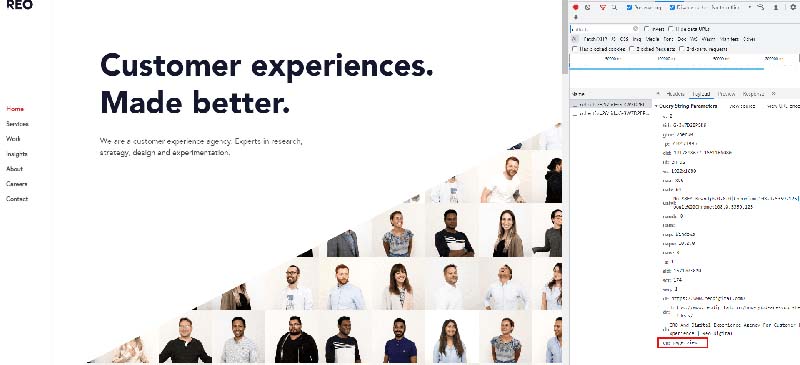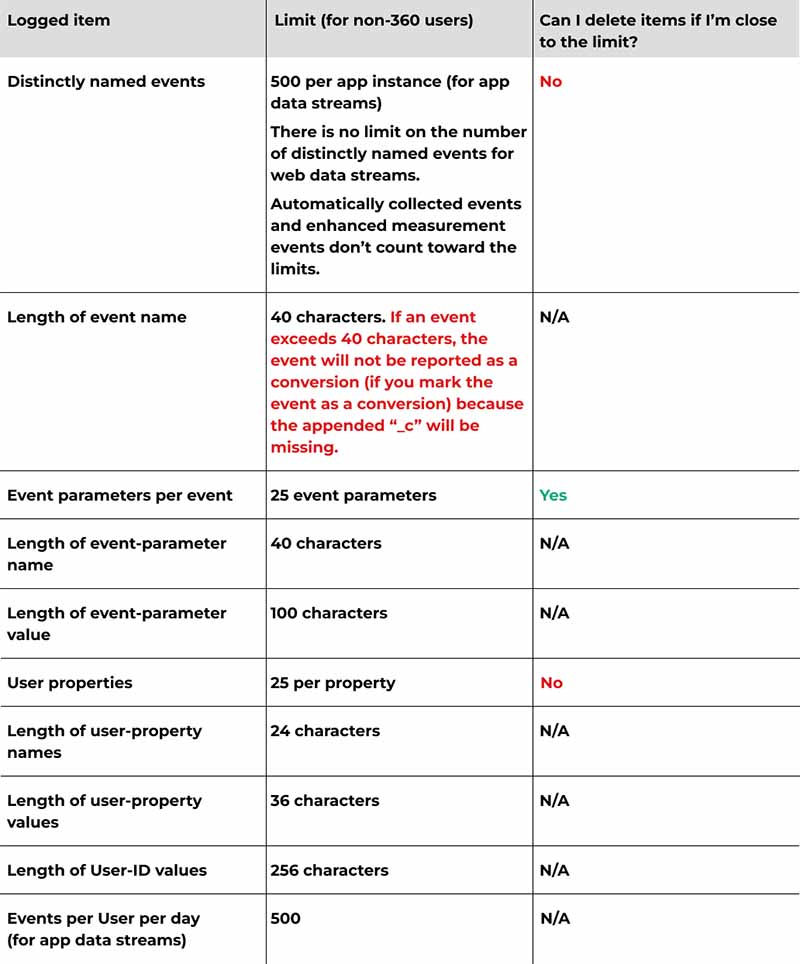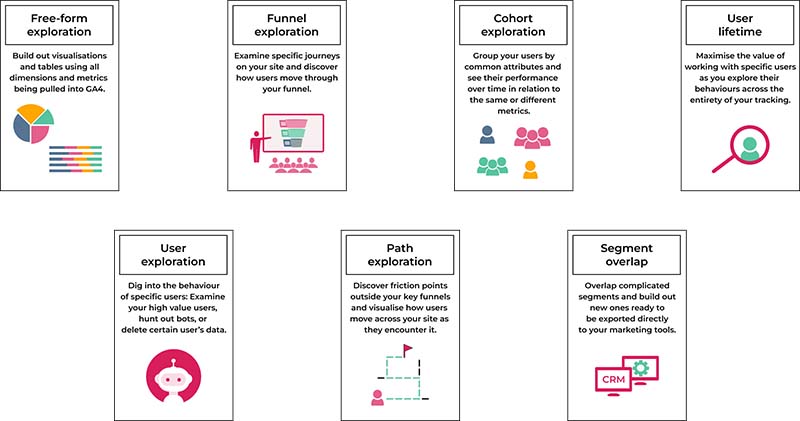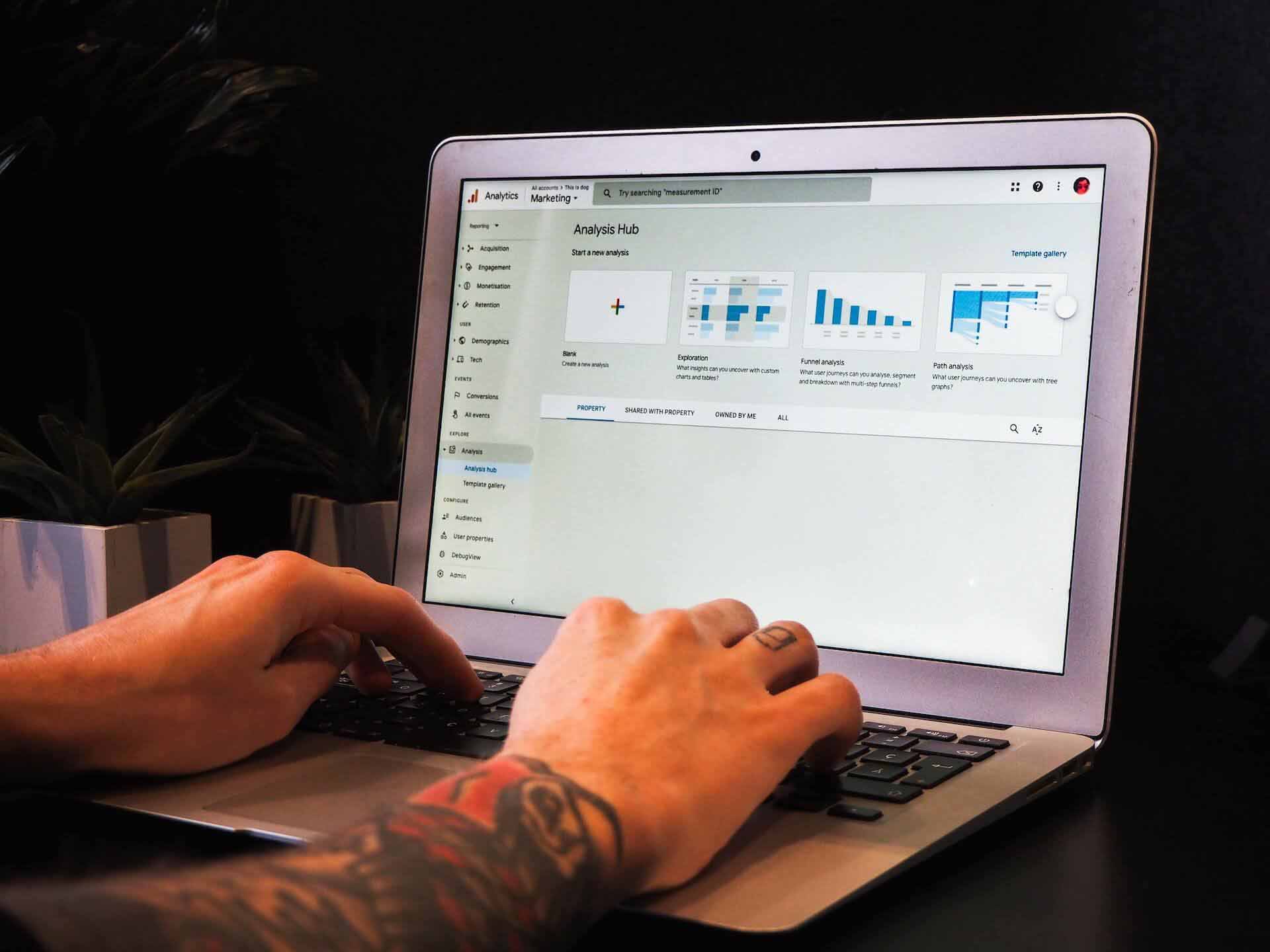What’s the difference
In many ways, Universal Analytics (UA) and Google Analytics 4 (GA4) are similar, but there are some significant differences in how tracking is built, the interface configuration, and how users report out data.
These differences are due to:- GA4’s data model is event-based while UA’s is session-based
- Event tracking in GA4 is based solely on event parameters and custom definitions
- UA has a collection of standard reports whereas GA4 works to put the focus on customisable reports and dashboards
But what do these changes look like in action?
The new data model

In comparison, looking back at the old UA data model, the basic unit of web tracking was a hit: page hit, event hit, ecommerce hit, social interaction hit, and so on. The values in these hits were then used to build your session and user data.
This same change can be seen in a link click. Rather than the old model of
- Category – Link Click
- Action – Click
- Label – {{URL clicked}}
Now, GA4 will send an event labelled “click” with a parameter name “ep.link_url” boasting a value of {{URL clicked}}.
While on first impressions this may not seem any better, GA4’s upgraded data architecture chips away at the fluff surrounding the data building process by attaching more than one piece of data to the event, reducing the load on the system freeing up room for other processes.

Interface changes – Custom definitions and user properties
Previously in UA, your custom data was gathered in a variety of ways: event naming conventions, custom dimensions at the hit, product scopes, and so on. Some of these had to be manually enabled on the interface while others were automatically placed there.
In GA4, each parameter you have added to your tracking must be set up as a custom definition with the admin panel. As standard, except for some real-time reporting, parameters won’t be readily available in your standard or custom reporting without taking this step. To do this your parameters can be setup in 1 of 3 ways:
Custom dimensions
- User scope – This is for the user data you desire to identify throughout all of their sessions such as whether they have created an account, are repeat customers, or which products they are subscribed to.
- Event scope – This is for individualised tracking of user activities, such as the aforementioned clickURL or the blog page author you capture alongside blog pageviews.
Custom metrics
- Event scoped only, these allow you to track numerical data that you wish to add up or measure in some way e.g., transaction revenue in a second currency or the distance between a user and their closest store from a Find A Store feature.
Annoyingly, there are limitations on custom parameters for them to be processed by GA4 and how many you can turn into custom definitions, a full list of which can be seen in the table below.

Notably, GA4 lacks “session” scoped custom data. To recreate this function from UA, you would either need to retain that data on every event fired during a session so that you could filter on “hits where this value is true” or you would need to collect it only on the one event where it is set and use segments or BigQuery to analyse that data.
Once you have all of your events tracked and all relevant parameters defined as definitions you will be able to report on that data.
Reporting – Standard and custom
UA formerly offered over 90 standard reports with a wide range of visualisation and parsing options for your data. Now, GA4 has fewer than 20. While much of this streamlining has eliminated the conventional look and feel of reports that UA had developed over time, GA4 customers are now able to mould the tool to their needs as Google has focussed on their custom reporting feature called explore.
This new explore feature allows you to build your own reports in 1 of 7 formats called techniques:















